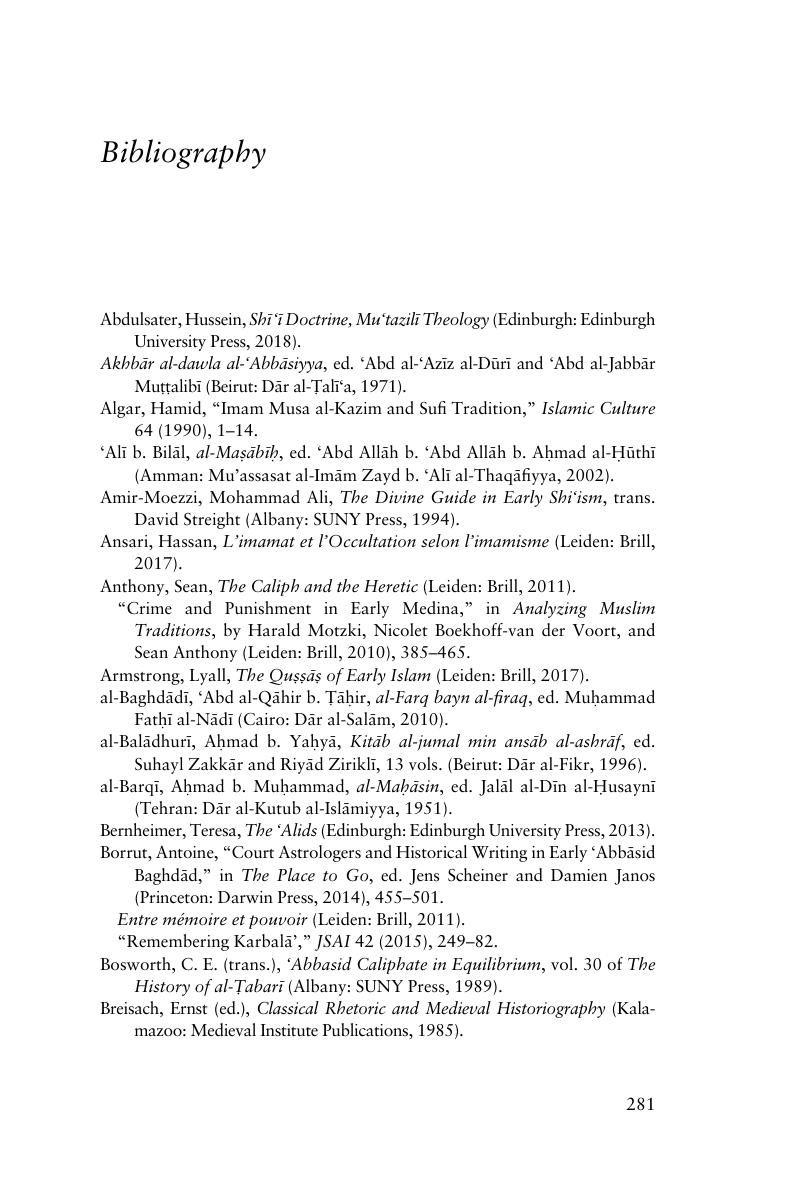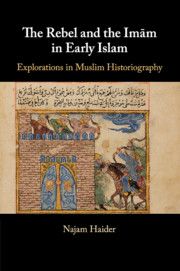Book contents
- The Rebel and the Imām in Early Islam
- The Rebel and the Imām in Early Islam
- Copyright page
- Dedication
- Contents
- Figures and Tables
- Acknowledgments
- Note on Transliteration and Dates
- Note on Front Cover Image
- Explanation of Citation
- 1 Modeling Islamic Historical Writing
- 2 The Rise and Fall of Mukhtār b. Abī ‘Ubayd (d. 67/687)
- 3 The Life of Mūsā b. Ja‘far al-Kāẓim (d. 183/799)
- 4 The Last Years of Yaḥyā b. ‘Abd Allāh (d. 187/803)
- 5 Reconsideration
- Appendix The Narrative Elements for Mukhtār’s Revolt
- Bibliography
- Index
- References
Bibliography
Published online by Cambridge University Press: 06 September 2019
- The Rebel and the Imām in Early Islam
- The Rebel and the Imām in Early Islam
- Copyright page
- Dedication
- Contents
- Figures and Tables
- Acknowledgments
- Note on Transliteration and Dates
- Note on Front Cover Image
- Explanation of Citation
- 1 Modeling Islamic Historical Writing
- 2 The Rise and Fall of Mukhtār b. Abī ‘Ubayd (d. 67/687)
- 3 The Life of Mūsā b. Ja‘far al-Kāẓim (d. 183/799)
- 4 The Last Years of Yaḥyā b. ‘Abd Allāh (d. 187/803)
- 5 Reconsideration
- Appendix The Narrative Elements for Mukhtār’s Revolt
- Bibliography
- Index
- References
Summary

- Type
- Chapter
- Information
- The Rebel and the Imãm in Early IslamExplorations in Muslim Historiography, pp. 281 - 288Publisher: Cambridge University PressPrint publication year: 2019



